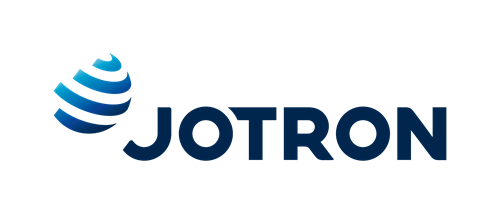ENAIRE acquires three state-of-the-art radars and completes the upgrades to its surveillance network
At the most recent meeting of its Governing Board, ENAIRE, the air navigation service provider in Spain, approved the tender for a contract to procure three secondary radars with Mode S technology.
This purchase will mean the completion of the upgrade to the network of 29 radars deployed throughout Spain for air traffic surveillance. The radars are being purchased to be installed at the radar stations of Erillas (Córdoba), Valencia and Málaga.
The project, financed by the European Union's recovery funds, represents an investment of 3.2 million euros
The tender is worth a total of 3.2 million euros (3,209,550 euros) without tax, and is financed by the European funds from the Recovery, Transformation and Resilience Plan (PRTR), as part of ENAIRE's "Actions for the Development of the Single European Sky" Project.
These secondary radars are equipped with digital receivers and Mode S technology, which provides additional information on airborne aircraft, making it possible to manage traffic more smoothly and enhance safety. This type of radar is used to monitor and control traffic, since it provides information on the position of each aircraft, its identification and flight level, improving the location and identification of all the traffic that is operating within its range.
In addition, this radar technology incorporates a redundant Automatic Dependent Surveillance-Broadcast (ADS-B) station, which allows the position of aircraft to be obtained based on the information they broadcast through their on-board sensors. This function ensures that surveillance information remains available even if the radar stations experience mechanical faults.
Specifically, the new radars will serve the ENAIRE Air Traffic Control Centres in Madrid, Seville and Barcelona.
The installation of these radars will round out the mode S coverage throughout Spain.
These stations help improve the international standing of ENAIRE as air navigational manager in the field of surveillance, in line with European requirements to phase in new technologies that improve air traffic management in Europe.
Secondary Mode S radars and ADS-B stations
The secondary surveillance radar is a system that puts out an information request via a radio signal at a specific frequency received by the aircraft. To receive this signal, the plane responds via a transponder, which decodes the signal and sends the required information so that on the ground they can identify, in addition to its position, parameters such as the company it belongs to, the route it is taking or the height it is flying at.
The secondary Mode S surveillance radar is an improvement on the secondary monopulse radar, which was being used up until the development of Mode S technology. This radar uses the same frequencies but can carry out selective interrogations, which decreases radio electric pollution.
Another improvement that Mode S technology brings is an increased capacity to exchange information between the radar and the plane, which means that the aircraft can provide information on its flight plan, intended heading and altitude, and other parameters of the aircraft's flight management system.
Out of all the technology available for improving the provisions of the Spanish surveillance system, Mode S is the most mature and established, allowing for improved operations in various European countries.
The Automatic Dependent Surveillance - Broadcast (ADS-B) station can obtain data on the aircraft positions via the information that they automatically transmit from their on-board sensors. It is a new technology that in the future is expected to complement the surveillance information of radars, being able to provide surveillance information with lower costs and less environmental impact.
ORION Communications Supervision
ENAIRE's Governing Board also awarded three important investments for a total of 5.7 million euros (5,757,079 euros).
ENAIRE approved awarding the service that will permit the continued deployment of its Integrated Communications and Supervision Systems (ORION) at various air navigation sites (communications centres, airports and air traffic control centres).
The service to deploy the ORION System has been awarded for 2,053,120 euros without tax to the joint venture of COMSA-OASYS Outsourcing Automation Systems, with a three-year completion period.
This project will permit ENAIRE to receive services to continue with the software development, supply, installation and implementation of equipment that allows the functions of supervision, remote control and configuration, among others, of ground-air, ground-ground, voice communication and voice recording systems in certain airports in the Aena network where Aena will upgrade the equipment, as well as in en route and approach communication centres, and control centres in ENAIRE's regional offices.
This contract includes activities to develop software and to deploy and validate the integration of new communications systems into ORION, mainly at airports being upgraded by Aena, namely in Málaga, Barcelona, Logroño, Seville and Cuatro Vientos (Madrid), as well as in ENAIRE radio and air traffic control centres.
It will also include the development and deployment of nodes with the capacity for inter-centre contingencies in Madrid and Barcelona, as well as a node for local contingencies in the Canary Islands.
CRAMI Aeronautical Messaging
ENAIRE will also allocate 2,005,000 euros over the next three years to the maintenance and technical support of the CRAMI Centralised System. The winning contractor is Telefónica.
ENAIRE manages technical and operational aspects of the Centralised Aeronautical Electronic Messaging System (CRAMI), a national node of the network of fixed aeronautical telecommunications and an integral element of the ICAO (International Civil Aviation Organization) Aeronautical Fixed Service, the only entry/exit point for aeronautical information. Among other features, it allows end users to exchange flight plans, distress messages, emergency messages, those involving flight safety and regularity, as well as meteorological, aeronautical, air and service information.
On an international level, due to ENAIRE's responsibility to act as an international gateway with other aeronautical regions, the Centralised Electronic Aviation Messaging System is used to exchange all information flows between the EUR Region (Europe) and the aeronautical regions of America and Africa. It also exchanges aeronautical messages generated by European applications such as EUROCONTROL NM, EAD and EURONOTAM.
Finally, ENAIRE awarded the Digital Workstation Management Service to the company Sermicro for the amount of 1,698,959 euros without tax.



.jpg)


.png)


Comments
There are no comments yet for this item
Join the discussion